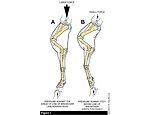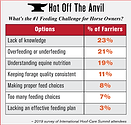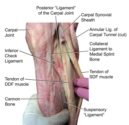Advertise Follow Us
Anatomy
Research Journal: January/February 2021
“The information, ideas, and opinions expressed are those of the author and do not necessarily represent those of the United States Department of Agriculture."
Read More
Equine Reciprocating Systems
Hoof Trim has Varied Effects on the Equine Forelimb
Demonstrations and real-life examples challenge farriers to think about their approach to solving foot problems
Read More
Research Journal: July/August 2020
The information, ideas and opinions expressed are those of the author and do not necessarily represent those of the United States Department of Agriculture.
Read More
Equine Reciprocating Systems: New Parts and Novel Attachments
Understanding the anatomical parts and novel attachments critical to reciprocating systems in the modern-day equine will lay the farrier’s groundwork for achieving soundness
Read More












